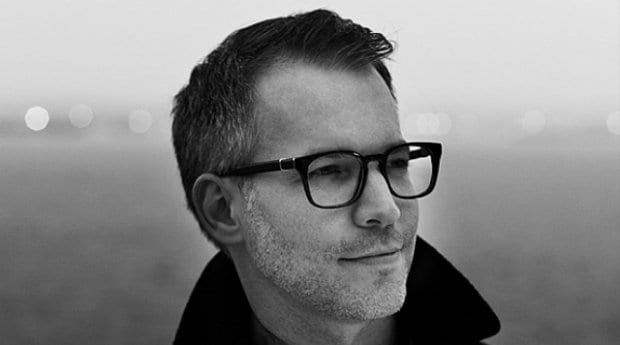In his new book, The End of Absence, Michael Harris remembers life before the crowded connectivity of social media and wonders what we’re losing in a world where quiet moments of personal daydreaming are increasingly rare. Harris, who wrote his Campus Chronicles column from 2002 to 2005 for Xtra’s Vancouver edition, recently moved to Toronto. His new book has been shortlisted for a 2014 Governor General’s Literary Award.
Here is an excerpt from Chapter 2 of The End of Absence:
It’s becoming more and more obvious. I live on the edge of a Matrix-style sleep, as do we all. On one side: a bright future where we are always connected to our friends and lovers, never without an aid for reminiscence or a reminder of our social connections. On the other side: the twilight of our pre-Internet youths. And wasn’t there something . . . ? Some quality . . . ?
. . . This is not a youth-only phenomenon. A 2013 study from the University of Michigan found that those of us in our late thirties have now reached the point of having as many electronic interactions as we have face-to-face interactions. What a dubious honor that is — to be the first generation in history to have as many exchanges with avatars as with people. I wonder, sometimes, if this means I’ll start to treat friends and family as avatars in person. Occasionally, I’m hit with how weirdly consistent a group of people appears during a dinner party — how weird it is that they aren’t changing or scrolling like thumbnail portraits on a Twitter feed, being replaced, or flicking off. I’m suffering the same brain slips that young Benjamin [mentioned earlier in this chapter] suffered when he tried to use a hard-copy magazine as a digital interface. The only difference is that I’m more freaked out.
Increasingly, I notice small moments when I treat hard-copy material as though it were digital. I’ve seen my fingers reach instinctively to zoom in to a printed photo or flick across a paper page as though to advance the progress of an e-book. These slips are deeply disturbing, a little like early signs of dementia. And they crop up in more meaningful scenarios, too. Just the other day, while discussing a particularly dreadful acquaintance with a friend of mine, I actually said, “Ugh, unfollow,” using Twitter’s term for removing an avatar from one’s ranks. And it wasn’t a semantic joke, is the thing. I clicked a button in my head and felt that jerk’s swift removal from my mental address book.
There is one key difference here between young Benjamin and me. I am aware of my own confusion and can confront it. I can still recall my analog youth.
In the quiet suburb where I was raised, there was a green hill near our house, a place where no one ever went. It was an easy trek, over the backyard fence and up a dirt path, and I would go there on weekends with a book if I wanted to escape the company of family or merely remove myself from the stultifying order of a household. Children do need moments of solitude as well as moments of healthy interaction. (How else would they learn that the mind makes its own happiness?) But too often these moments of solitude are only stumbled upon by children, whereas socialization is constantly arranged.
I remember — I was nine years old — I remember lying on the green hill and reading my book or merely staring for a long, long time at the sky. There would be a crush of childish thoughts that would eventually dissipate, piece by piece, until I was left alone with my bare consciousness, an experience that felt as close to religious rapture as I ever had. I could feel the chilled sunlight on my face and was only slightly awake to the faraway hum of traffic.
This will sound more than a little fey, but that young boy on the hillside did press daisies into his book of poetry. And just the other day, when I took that book down from its dusty post on my shelf, the same pressed flowers fell out of its pages (after a quarter century of stillness) and dropped onto my bare toes. There was a deep sense memory, then, that returned me to that hushed state of mind on the lost green hill, a state that I have so rarely known since.
And to think: That same year, a British computer scientist at CERN called Tim Berners-Lee was writing the code for the World Wide Web. I’m writing these words on the quarter-century anniversary of his invention.
That memory of a quieter yesteryear is dearly useful. Awake — or at least partly so — to the tremendous influence of today’s tech-littered landscape, I have the choice to say yes and no to the wondrous utility of these machines, their promise and power. I do not know that Benjamin will have that same choice.
Regardless, the profound revelations of neuroplasticity research are constantly reinscribing the fundamental truth that we never really outgrow our environments. That the old, like the young, are vulnerable to any brave new world they find themselves walking through. The world we fashion for ourselves, or think we fashion, remains an insistent shaper of our minds until the day we die. So, in fact, we are all Kids These Days.
Despite the universality of this change, which we’re all buffeted by, there is a single, seemingly small change that I’ll be most sorry about. It will sound meaningless, but: One doesn’t see teenagers staring into space anymore. Gone is the idle mind of the adolescent.
I think that strange and wonderful things occur to us in those youthful time snacks, those brief reprieves when the fancy wanders. We know that many scientists and artists spring from childhoods of social deprivation. The novels of Anthony Trollope, for example, are the products of a friendless youth. He describes in his autobiography years and years of boyish day- dreaming, which continued in adulthood:
Other boys would not play with me. . . . Thus it came to pass that I was always going about with some castle in the air. . . . There can, I imagine, hardly be a more dangerous mental practice; but I have often doubted whether, had it not been my practice, I should ever have written a novel. I learned in this way to maintain an interest in a fictitious story, to dwell on a work created by my own imagination, and to live in a world altogether outside the world of my own material life.
Solitude may cause discomfort, but that discomfort is often a healthy and inspiring sort. It’s only in moments of absence that a daydreaming person like Anthony Trollope can receive truly unexpected notions. What will become of all those surreptitious gifts when our blank spaces are filled in with duties to “social networks” and the relentless demands of our tech addictions?
I fear we are the last of the daydreamers. I fear our children will lose lack, lose absence, and never comprehend its quiet, immeasurable value. If the next generation socializes more online than in the so-called real world, and if they have no memory of a time when the reverse was true, it follows that my peers and I are the last to feel the static surrounding online socialization. The Internet becomes “the real world” and our physical reality be- comes the thing that needs to be defined and set aside — “my analog life,” “my snail life,” “my empty life.”
Montaigne once wrote, “We must reserve a back shop, all our own, entirely free, in which to establish our real liberty and our principal retreat and solitude.” But where will tomorrow’s children set up such a shop, when the world seems to conspire against the absentee soul?
Excerpt from The End of Absence, by Michael Harris. Published by HarperCollins Canada. All rights reserved.


 Why you can trust Xtra
Why you can trust Xtra


